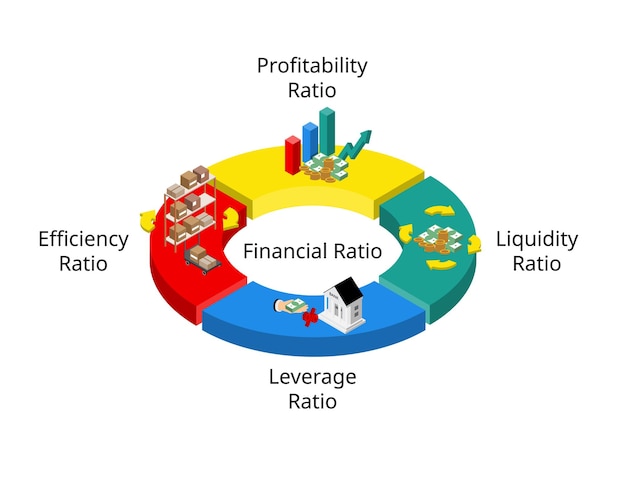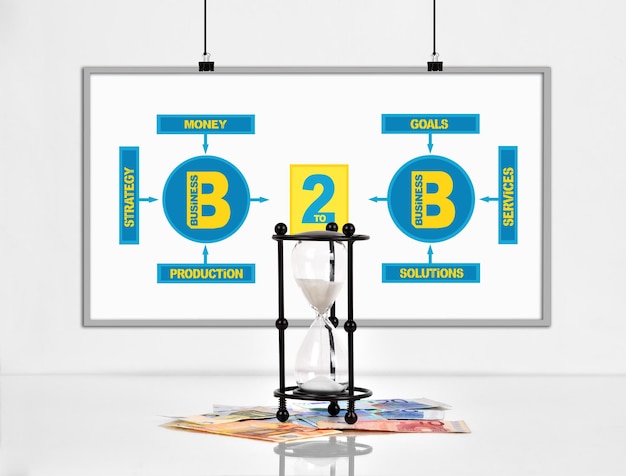Investing for Retirement: A Beginner’s Guide to 401(k)s and IRAs

Investing for retirement doesn’t have to be daunting; this beginner’s guide breaks down 401(k)s and IRAs, explaining how they work, their benefits, contribution limits, and strategies to help you confidently plan for a secure financial future.
Planning for retirement can feel overwhelming, but understanding your options is the first step towards a secure future. This guide will walk you through the essentials of investing for retirement: A beginner’s guide to 401(k)s and IRAs, helping you make informed decisions.
Understanding the Basics of Retirement Investing
Retirement investing is about setting aside money today so it can grow and provide income when you decide to retire. It’s a long-term game, so understanding the basic principles is crucial.
Two of the most common retirement savings vehicles in the US are 401(k)s and IRAs. Let’s dive into what makes them tick.
What is a 401(k)?
A 401(k) is a retirement savings plan sponsored by your employer. Contributions are often made pretax, reducing your current taxable income. Many employers offer matching contributions, which is essentially free money to help you grow your savings.
What is an IRA?
An IRA, or Individual Retirement Account, is a retirement savings account that you can open on your own, independent of your employer. There are two main types: Traditional IRAs, which may offer tax deductions on contributions, and Roth IRAs, which offer tax-free withdrawals in retirement.

Diversifying your investments within these accounts is also key to managing risk and maximizing potential returns. Consider spreading your investments across different asset classes, such as stocks, bonds, and real estate.
In summary, understanding the basics of retirement investing, including 401(k)s and IRAs, is essential for building a secure financial future. These tools, combined with a diversified investment strategy, can help you reach your retirement goals.
401(k) Plans: A Detailed Overview
A 401(k) plan is a powerful tool for retirement savings, often offered as a benefit by employers. These plans allow employees to contribute a portion of their salary, often before taxes, into a dedicated retirement account.
Let’s explore the details of 401(k) plans, including their advantages, contribution limits, and common investment options.
- Contribution Limits: Each year, the IRS sets limits on how much you can contribute to your 401(k). Staying informed about these limits is crucial for maximizing your savings potential.
- Employer Matching: One of the biggest perks of a 401(k) is employer matching. If your employer offers a match, contributing enough to take full advantage of it is essential. It’s like getting free money!
- Investment Options: 401(k) plans typically offer a range of investment options, such as mutual funds, target-date funds, and company stock. Understanding these options is key to building a portfolio that aligns with your risk tolerance and retirement goals.
Choosing the right investments within your 401(k) is crucial. Target-date funds are a popular choice for beginners, as they automatically adjust your asset allocation as you get closer to retirement.
In conclusion, 401(k) plans offer a convenient and tax-advantaged way to save for retirement. Understanding the details of your plan, including contribution limits, employer matching, and investment options, can help you build a solid foundation for your financial future.
IRAs: Traditional vs. Roth
IRAs, or Individual Retirement Accounts, are another popular way to save for retirement. Unlike 401(k)s, you can open an IRA on your own, independent of your employer. The main decision you’ll face when opening an IRA is whether to go with a Traditional or Roth option.
Let’s compare Traditional and Roth IRAs to help you decide which best suits your financial situation.
Traditional IRA: Tax-Deferred Growth
Traditional IRAs may offer tax deductions on your contributions in the year they are made. Your investments grow tax-deferred, meaning you won’t pay taxes until you withdraw the money in retirement. At that time, withdrawals are taxed as ordinary income.
Roth IRA: Tax-Free Withdrawals
Roth IRAs don’t offer an upfront tax deduction, but your investments grow tax-free, and withdrawals in retirement are also tax-free, provided certain conditions are met. This can be especially advantageous if you expect to be in a higher tax bracket in retirement.

Choosing between a Traditional and Roth IRA depends on your current and expected future tax situation. If you believe you’re in a lower tax bracket now than you will be in retirement, a Roth IRA might be the better choice. If you need the upfront tax deduction or expect to be in a lower tax bracket in retirement, a Traditional IRA could be more suitable.
In essence, both Traditional and Roth IRAs offer valuable ways to save for retirement. Understanding their differences and considering your personal financial circumstances can help you make an informed decision.
Contribution Limits and Deadlines
Staying up to date with contribution limits and deadlines is crucial when it comes to 401(k)s and IRAs. The IRS sets annual limits on how much you can contribute to these accounts, and missing deadlines can mean missing out on valuable tax benefits.
Here’s a guide to understanding contribution limits and deadlines for both 401(k)s and IRAs.
- 401(k) Contribution Limits: The 401(k) contribution limit typically increases each year to account for inflation. Keeping track of these limits will help you maximize your pretax savings. There’s also a catch-up contribution provision for those age 50 and over.
- IRA Contribution Limits: IRA contribution limits are generally lower than 401(k) limits. As with 401(k)s, there’s a catch-up contribution for those age 50 and over. Keep in mind that your ability to contribute to a Roth IRA may be limited based on your income.
- Deadlines: For 401(k)s, contributions are typically made throughout the year via payroll deductions. For IRAs, you generally have until the tax filing deadline (typically April 15th) of the following year to make contributions for the previous tax year.
It’s a good practice to review your contribution levels regularly to ensure you’re on track to meet your retirement goals. Consider setting up automatic contributions to take the guesswork out of saving.
In summary, being aware of contribution limits and deadlines for 401(k)s and IRAs can help you make the most of these retirement savings vehicles. Stay informed, plan ahead, and take advantage of the tax benefits they offer.
Investing Strategies for Retirement
Once you’ve opened a 401(k) or IRA, the next step is to develop an investment strategy that aligns with your retirement goals and risk tolerance. This involves choosing the right mix of investments and managing your portfolio over time.
Here are some investment strategies to consider for your retirement savings.
Asset Allocation
Asset allocation is the process of dividing your portfolio among different asset classes, such as stocks, bonds, and cash. A well-diversified portfolio can help reduce risk and improve returns over the long term. Younger investors often allocate more to stocks, while those closer to retirement may shift toward bonds.
Dollar-Cost Averaging
Dollar-cost averaging involves investing a fixed amount of money at regular intervals, regardless of market fluctuations. This strategy can help reduce the risk of investing a large sum of money at the wrong time. It’s especially useful for long-term retirement savings.
Rebalancing your portfolio periodically is also crucial. Over time, your initial asset allocation may drift due to market performance. Rebalancing involves selling some investments and buying others to bring your portfolio back to its target allocation.
Ultimately, the best investment strategy for retirement depends on your individual circumstances. Consider consulting with a financial advisor to get personalized advice.
In short, developing an effective investment strategy is essential for building a successful retirement portfolio. Consider your risk tolerance, time horizon, and financial goals when making investment decisions.
Common Mistakes to Avoid
When investing for retirement: A beginner’s guide to 401(k)s and IRAs, it’s important to be aware of common mistakes that can derail your progress. Avoiding these slip-ups can help you stay on track toward a secure financial future.
Here are some pitfalls to watch out for:
- Not Starting Early Enough: Procrastinating on retirement savings can significantly impact your ability to reach your goals. The earlier you start, the more time your investments have to grow.
- Withdrawing Early: Taking money out of your retirement accounts before retirement can result in penalties and taxes, as well as reduce the amount you have available when you need it most.
- Ignoring Fees: Fees can eat into your investment returns over time. Be sure to understand the fees associated with your 401(k) or IRA, including management fees and expense ratios.
Failing to diversify is another common mistake. Putting all your eggs in one basket can increase your risk. Spread your investments across different asset classes to help manage risk.
Staying informed and avoiding these common mistakes can help you maximize your retirement savings and achieve your financial goals.
In conclusion, being aware of common retirement investing mistakes and taking steps to avoid them is essential for building a successful retirement portfolio. Stay disciplined, stay informed, and stay focused on your long-term goals.
| Key Point | Brief Description |
|---|---|
| 💼 Start Early | Begin saving as soon as possible to maximize compound growth. |
| 📈 Diversify | Spread investments across stocks, bonds, and other assets. |
| 💰 Maximize Match | Contribute enough to get the full employer 401(k) match. |
| 📝 Stay Informed | Keep up with contribution limits and investment options. |
Frequently Asked Questions
What is the difference between a 401(k) and an IRA?
▼
A 401(k) is employer-sponsored, offering pretax contributions and potential employer matching, while an IRA is an individual account with Traditional (tax-deferred) or Roth (tax-free) options, independent of employers.
What are the contribution limits for 401(k)s and IRAs in 2024?
▼
For 2024, the 401(k) contribution limit is $23,000 ($30,000 with catch-up), and the IRA limit is $7,000 ($8,000 with catch-up). Check the IRS website for the most current limits.
What is asset allocation and why is it important?
▼
Asset allocation is dividing your portfolio among stocks, bonds, and cash. It is important because it helps manage risk and improve returns based on your risk tolerance and investment timeline.
What is dollar-cost averaging?
▼
Dollar-cost averaging involves investing a fixed amount regularly, regardless of market fluctuations. This can reduce the risk of investing a large sum at the wrong time, beneficial for long-term retirement savings.
What should I do if I change jobs and have a 401(k)?
▼
You typically have three options: leave it with your former employer (if allowed), roll it over into an IRA, or roll it over into your new employer’s 401(k) plan. Consider the fees.
Conclusion
Investing for retirement doesn’t need to be a complicated task. By understanding the basics of 401(k)s and IRAs, knowing contribution limits and deadlines, and avoiding common mistakes, you can take control of your financial future and build a secure retirement.
Read more content





